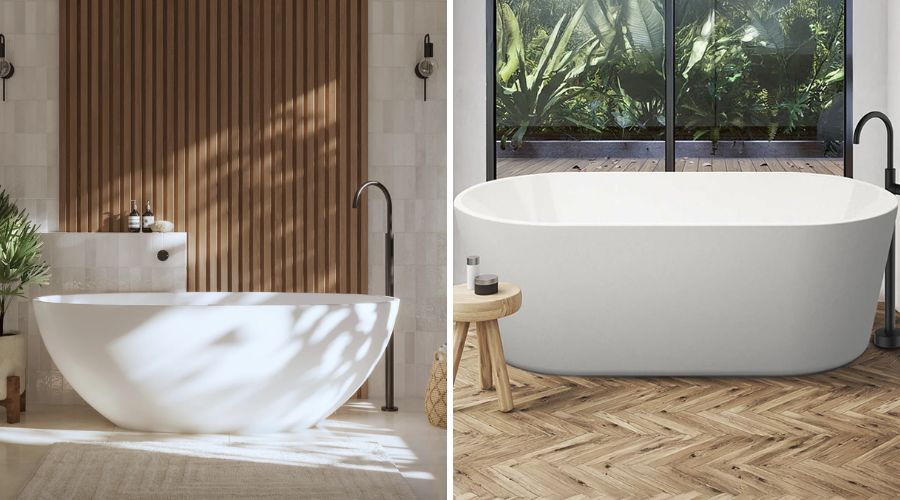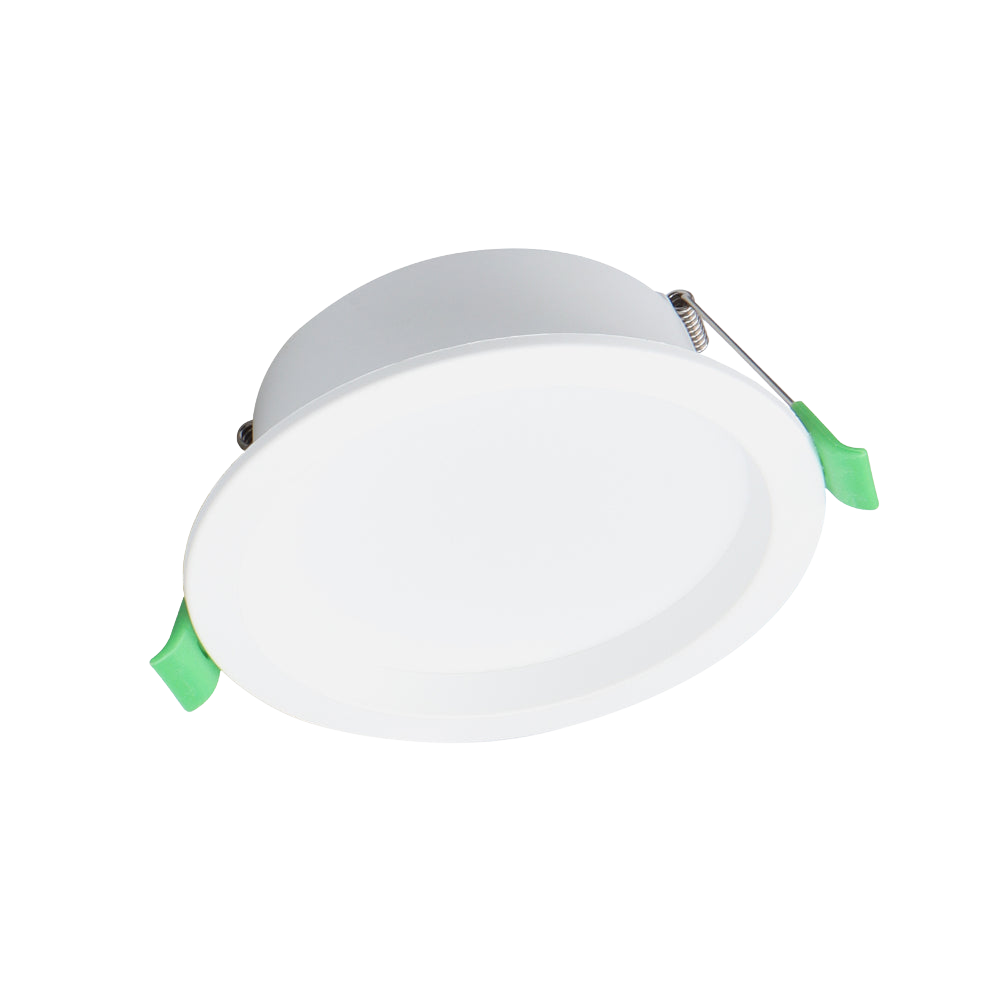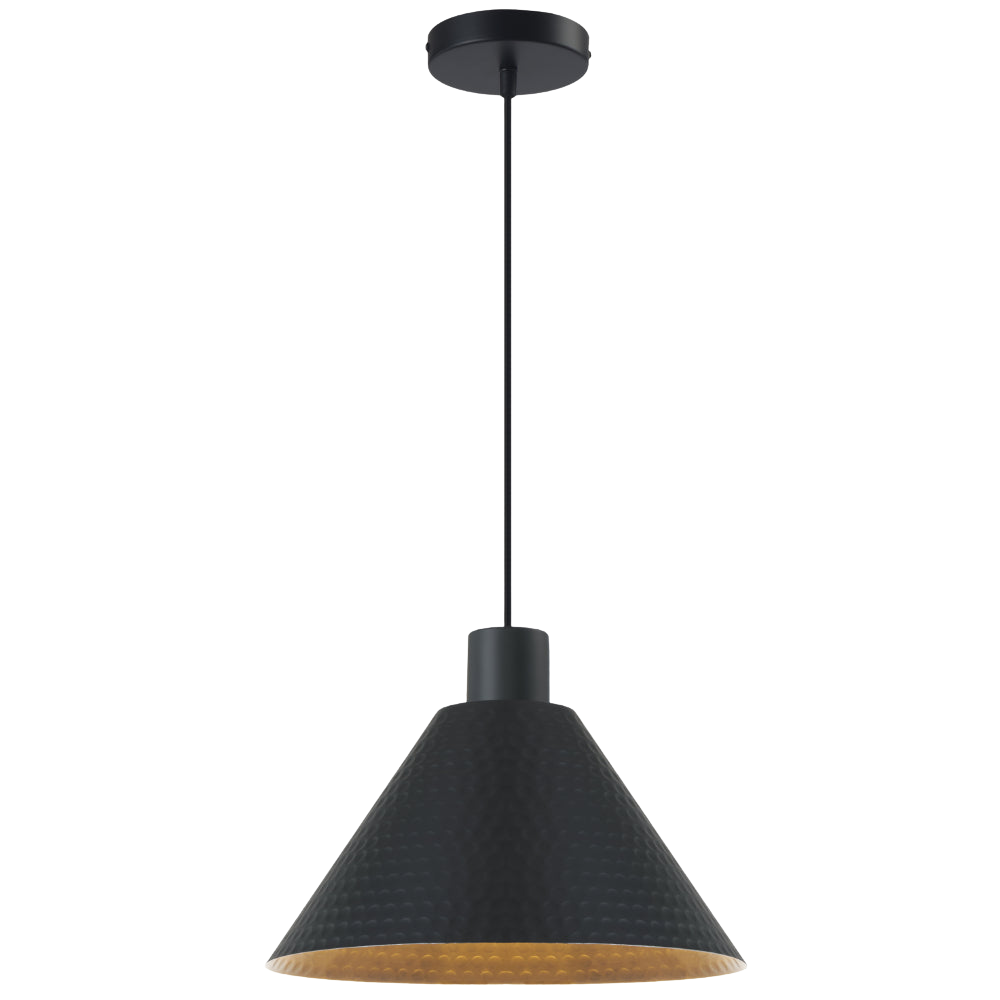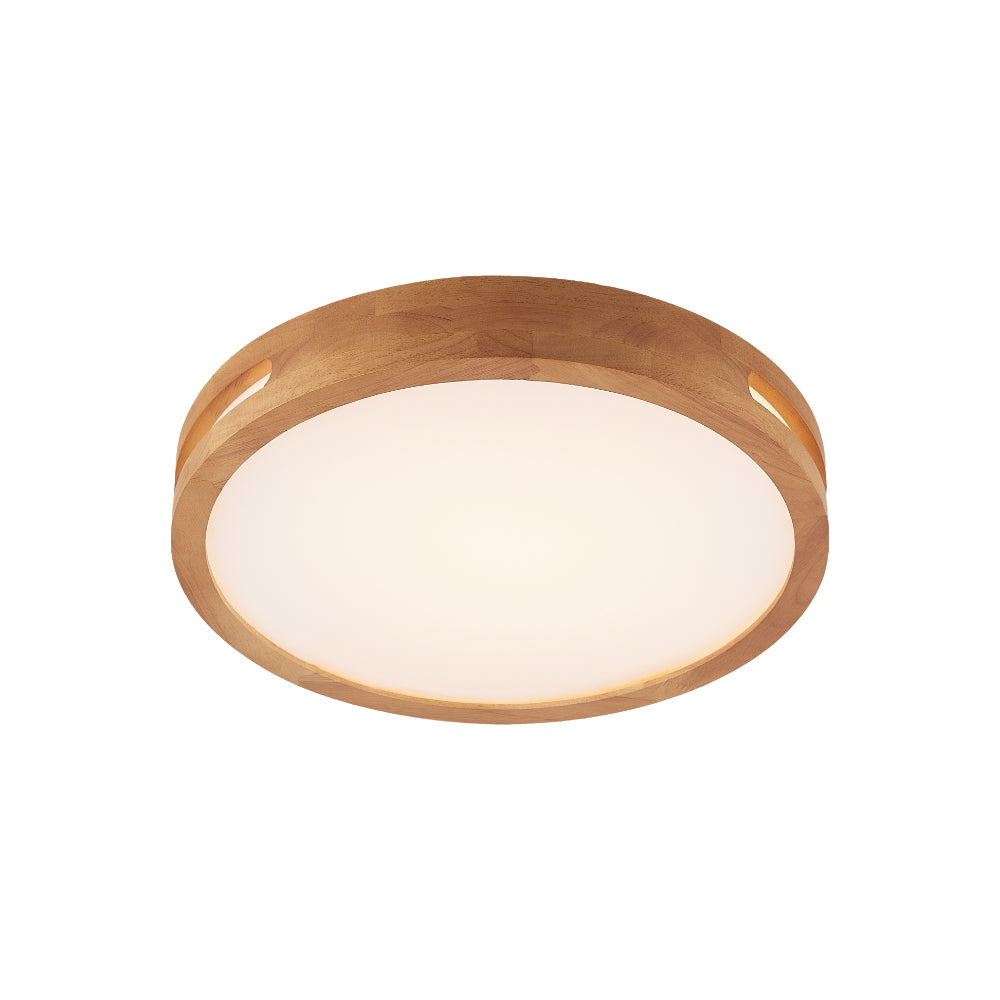Freestanding Bathtubs vs Drop-In Bathtubs: What’s the Difference and Which is Better?
Trying to decide between a freestanding bath and a drop-in tub? This guide breaks down the differences in style, installation and space, so you can choose what actually works for your bathroom.

When it comes to choosing a bathtub, freestanding baths and drop-in bathtub styles are two of the most popular options — and for good reason. Both offer a very different look and feel, and depending on your bathroom layout, one might be a far better fit than the other.
If you’re weighing up your options, here’s a straightforward look at what separates these two styles and how to choose the one that suits your space, routine and overall vibe.
What is a Freestanding Bathtub?
A freestanding bathtub is exactly what it sounds like: a standalone bath that doesn’t need to be enclosed or built in. It can sit anywhere with proper plumbing access, whether that’s in the centre of the room, along a feature wall or tucked under a window.
This style works well in bathrooms where space allows for a little extra breathing room around the tub. Visually, it’s more of a statement. It gives off spa-like energy and suits both minimalist and classic styles, depending on the shape and finish, from soft curves to subtle details like our textured fluted bathtubs, to premium solid surface bathtubs with a matte, stone-like feel.
Freestanding tubs are often paired with freestanding bath mixers, which are installed from the floor rather than the wall or hob. If you’re after something sculptural, eye-catching and relaxing, this is the direction to go.

A freestanding bathtub pairs beautifully with a freestanding mixer tap.
What is a Drop-in Bathtub?
A drop-in bathtub, also called an inset bathtub, is designed to sit within a built structure like a tiled hob or surround. The outer frame supports the bath, and only the interior is visible once installed. This gives it a neat, seamless finish and a more integrated look, especially popular in lighter, neutral tones like our white bathtubs and acrylic bathtubs, which work with almost any bathroom tile or bathroom vanity.
This is a very practical style, often seen in family bathrooms or homes where functionality comes first. Drop-in tubs are easy to clean, easy to get in and out of, and often more compact, making them great for smaller rooms or multi-purpose bathrooms.
They’re also a solid option if you’re adding storage or bench space around the bath, since the hob can double as a shelf for towels, plants or products.
You’ll find drop-in styles throughout the main bathtub collection, especially in white gloss finishes that work with almost any bathroom palette.

A drop-in or inset bathtub is one of the most common types of bathtubs you’ll find in Australian homes.
Comparing Freestanding Bathtubs vs Drop-in Bathtubs
Style and Impact
Freestanding baths are the showstoppers. They instantly add visual interest and are often the first thing people notice when they walk into the room. If you want a bath that makes a statement and brings a sense of luxury, freestanding is the way to go.
Drop-in baths are more understated, blending into the room rather than standing out. They suit bathrooms where other features take centre stage, like bold tiles, statement vanities or custom lighting.
Space and Layout
This is often the deciding factor. Freestanding baths need clearance around the tub, not just for style but for practical cleaning access. If your bathroom is tight, this could be tricky.
Drop-in tubs are more space-efficient. They can be placed in a corner or flush against a wall, and if you’re really tight on space, small bathtubs or even compact corner bathtubs can make the most of tricky layouts without giving up on comfort. Our rectangle bathtubs are also great for hugging walls and keeping things functional. If you’re designing for a shared or family bathroom, the easier access and tighter footprint often make sense.

Freestanding bathtubs like Decina Prezzo 1700mm are perfect for spacious bathrooms and en suites.
Installation and Plumbing
Freestanding tubs are typically easier to install if you’re working with slab flooring and already have plumbing in the right spot. But because the bath is exposed on all sides, the plumbing (and flooring beneath) needs to be finished to a high standard.
Drop-in tubs involve more building work upfront, since you need a frame or hob to support the bath, plus tiling or finishing. But once installed, they can be easier to maintain — especially when it comes to fixing grout or sealing issues over time.
In either case, the type of bath tapware you choose matters. Wall-mounted taps work well with inset tubs, while floor-mounted mixers are designed for freestanding setups.
Cleaning and Access
Cleaning around a freestanding bath can be more involved, especially if there’s a narrow gap between the bath and wall. But on the upside, there’s no grout around the base, which means fewer spots for mould or soap scum to build up.
Drop-in tubs tend to be easier to clean day to day, particularly for families or homes with kids. You also get the added benefit of that tiled ledge, which can hold everything from candles to baby shampoo without needing extra shelves.
So, Which Bathtub is Better?
If you’re after something dramatic, sculptural and indulgent, a freestanding bath is the standout. It gives your bathroom a luxurious edge and creates a real moment in the space.
If your priority is space-saving, practicality and a clean, fuss-free look, then a drop-in bath is hard to beat. It’s a smart option for everyday use and works well in homes that favour function over form.
The best choice really comes down to your space and how you want to use it. You can explore the full range of bathtubs by style or finish, or filter by freestanding bathtubs, corner bathtubs, large bathtubs, black bathtubs or classic white bathtubs designs.
Buildmat stocks bathtubs from leading Australian brand ranges like Caroma toilets, known for durable, family-friendly designs, and Nero toilets, celebrated for sleek, design-led finishes.
Don't Forget About Bath Tapware
Your bathtub might be the main event, but the right bath tapware is what makes it functional, beautiful and built to last. If you’re pairing with a freestanding tub, take a look at freestanding bath taps — they add height, sculptural detail and make the most of your open layout.
For drop-in or inset bathtubs, wall-mounted taps offer a clean, space-saving solution. And if you want something more flexible, a swivel spout or bath tap with hose makes everyday use that little bit easier.
Finish-wise, you can go classic with chrome, bold with matte black, or soft and warm with brushed nickel. If your bath is deep, a gooseneck spout adds a beautiful curve that feels elevated without being fussy.
Need inspiration? Check out Matching Your Bathtub with Tapware: The Ultimate Style Guide for real-world examples of how to get the pairing right.
Upgrade Your Entire Bathroom Today
If you're updating more than just your bath, explore our matching bathroom tapware, bathroom bains, and bathroom accessories to tie the whole space together.
Need help deciding? Our team can help you weigh up sizing, layout and fittings that match the way you live. Contact us today or visit our Melbourne showroom at 6 Brindley St, Dandenong South VIC 3175.
You can also check out Buildmat's guide to choosing the best bathtub for your space.
































































































































































































































































































































